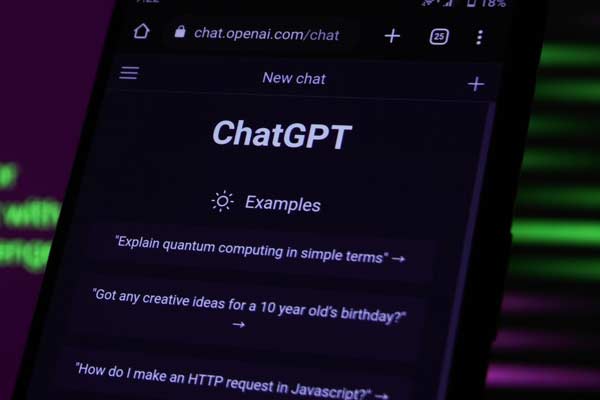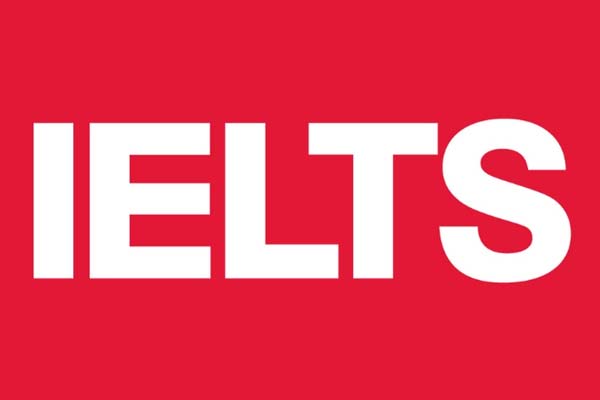How Are Public Schools Funded? A Clear Explanation
Local and state governments primarily fund public schools in the United States. The federal government provides about 8% of local school funding.
Public schools serve nearly 49.5 million students from pre-K to 12th grade. How schools get their funding varies from state to state and district to district.
The funding for public schools comes from a combination of revenue sources, including property taxes, sales taxes, income taxes, and other sources.
The revenue is collected by the local and state governments, which then allocate the funds to public schools based on various formulas, such as the number of students enrolled, the needs of the students, and the resources available.
Public schools spend most of their funding on personnel costs, such as salaries and benefits for teachers and staff. Other expenses include textbooks, technology, facilities maintenance, and transportation.
Public schools must provide all students with a free and appropriate education, regardless of their background or ability.
Funding for public schools has been debated and concerned for many years. There are concerns about funding inequities between schools, particularly those in low-income areas.
The federal government should play a larger role in funding public schools to ensure all students have access to a quality education.
The Role of the Federal Government
The federal government plays a significant role in funding public schools in the United States.
According to 2018-2019 school year data, most federal funding for public schools comes from the Child Nutrition Act, Title I, and the Individuals with Disabilities Education Act (IDEA).
Title I provides funds to school districts with large numbers of low-income students.
🌟 Hey Students! 🚀 Ready for the ultimate experience? Join us on Studentsinside.com's Facebook, YouTube, WhatsApp, and LinkedIn. Click now for tips, fun, and success vibes! 🌈✨ #StudentLife #JoinUs
These funds help schools offer additional resources to students at risk of falling behind their peers due to economic disadvantages. IDEA gives money to schools to help students with disabilities get special education services.
In addition to these programs, the federal government also provides funding through the Impact Aid program.
This program offers financial assistance to school districts with many students whose parents work or live on federal property, such as military bases or Indian reservations.
The federal government has a role in assessing school districts through standardized testing and offering teaching and learning best practices guidance.
Nevertheless, it’s important to remember that education is primarily a state and local responsibility in the United States, with the federal government mainly providing funding and guidance.
State and Local Governments’ Contribution
Public schools in the United States rely primarily on funding from state and local governments, accounting for about 92% of their total financial support, as reported by the Congressional Research Service.
State governments typically distribute education funds among school districts through formulas that consider factors such as student enrollment, teacher salaries, and local property values. These formulas aim to ensure that all students receive a minimum level of funding regardless of where they live.
Local governments, on the other hand, rely heavily on property taxes to fund their schools. The amount of funding a school district receives from local property taxes depends on the assessed value of the properties within the district.
This can lead to significant disparities in funding among school districts, with wealthier districts generally able to provide more resources for their students.
It is important to note that the proportion of revenue a school receives from state and local funding differs across each state and depends on various factors.
In some states, local governments provide a larger share of funding; in others, state governments provide the majority.
Taxation and Public School Funding
Public schools in the United States rely primarily on tax revenue, including property, sales, and income taxes. Property taxes, assessed based on real estate value, constitute the largest share, accounting for approximately one-third of total school funding.
These taxes vary by location and property value, with local governments collecting and then distributing them to school districts through a formula that considers factors such as student enrollment and district wealth.
Sales taxes also contribute to school funding, collected by state and local governments from selling goods and services. They are frequently earmarked for education programs, including public schools.
Some states also utilize income taxes imposed on individuals and businesses to support public education initiatives.
It’s worth noting that the specific tax rates and the primary funding sources for public schools differ significantly from state to state, with some relying predominantly on property taxes. In contrast, others prioritize sales or income taxes.
These variations consider the community’s financial capacity and the school district’s specific needs.
Funding Disparities and Equity Issues
Public schools in the United States face significant funding disparities and equity issues. These inequities are often based on socioeconomic factors and can considerably impact the quality of education provided to students.
One of the primary causes of funding disparities is the reliance on local property taxes to fund schools.
This system can lead to significant funding gaps between schools in low-income areas and more affluent neighborhoods. As a result, schools in low-income areas often need more resources to provide quality education to their students.
Apart from funding gaps, public school funding faces challenges related to adequacy and equity.
Adequacy relates to the funding required for quality education for all students, while equity focuses on the fair allocation of these funds.
Low-income students and their families bear the brunt of funding disparities and equity concerns. They often enroll in schools with limited resources, less-experienced educators, and inadequate facilities, resulting in an unequal educational experience compared to their wealthier counterparts.
Many advocates are calling for a more equitable distribution of education funding to address these issues.
This could include increasing funding at the federal level to reduce the reliance on local property taxes and implementing funding formulas that consider the needs of low-income students and schools.
Impact of Funding on Educational Outcomes
The level of funding allocated to public schools significantly impacts the quality of education provided.
Adequate funding can lead to better student outcomes and a higher quality of education. On the other hand, inadequate funding can lead to lower student outcomes and a lower quality of education.
Research has shown that students in well-funded schools perform better academically than those in poorly funded schools.
Adequate funding can provide resources such as textbooks, technology, and highly qualified teachers, which can improve the learning experience for students. This can result in higher graduation rates and better post-secondary opportunities for students.
Insufficient funding in education results in insufficient resources and support for students, detrimentally affecting their learning and academic performance.
Inadequate funding often translates to larger class sizes, limited extracurricular opportunities, and outdated school technology, ultimately diminishing student engagement and achievement.
Moreover, funding can also impact accountability in schools. Adequate funding can improve student progress and teacher performance monitoring, leading to more effective interventions and support for struggling students.
In contrast, adequate funding can make it easier for schools to provide the necessary support and resources to ensure student success.
Special Education and Funding
Special education is a critical aspect of public education, and it requires additional funding to meet the needs of students with disabilities. The Individuals with Disabilities Education Act (IDEA) is a federal law that provides funding to states to help them provide special education services to eligible students.
The IDEA requires states to provide free appropriate public education (FAPE) to all students with disabilities, and it outlines the requirements for developing and implementing individualized education programs (IEPs) for these students.
Special education funding is complex, and it involves multiple sources of funding. The federal government provides funding through the IDEA, but states and local districts also contribute to special education funding. In addition, some states have established separate funding streams for special education.
The IDEA allocates funds to states using a formula considering the state’s total population and the number of students with disabilities. States subsequently distribute these funds to local school districts based on the number of students with disabilities in each district.
The funding is intended to cover the additional costs of special education services, such as specialized instruction, assistive technology, and related services.
Despite the federal funding provided through the IDEA, many states and local districts need help to provide adequate funding for special education.
The cost of special education services can be significant and strain the resources of even the largest school districts. As a result, some school districts may be unable to provide the full range of services that students with disabilities require.
Alternative Funding Sources
While most public schools in the United States are funded through a combination of federal, state, and local funds, there are alternative funding sources that schools can tap into to supplement their budgets.
Grants
One such source is grants. Grants are funds given to schools by organizations, corporations, or government agencies for a specific purpose. For example, a school might receive a grant to purchase new technology equipment or to fund a unique program.
Grant opportunities can be found through various sources, such as the U.S. Department of Education, private foundations, and non-profit organizations.
Donations
Another alternative funding source is donations. Donations can come from individuals, businesses, or organizations and can be used for various purposes, such as purchasing new equipment or funding a scholarship program.
Many schools have established relationships with local businesses and community organizations to receive regular donations.
Lotteries
Some states have turned to lotteries as a way to fund public education. Lottery proceeds are typically earmarked for education and are used to supplement state funding. While lotteries can provide significant funding, they can also be controversial due to concerns about the regressive nature of lottery ticket sales.
Tuition and Fees
In some cases, public schools may charge tuition or fees to students. This is more common at the college and university levels, but some public schools at the K-12 level may also charge fees for extracurricular activities or specialized programs.
Title I Grants
Finally, Title I grants can also be considered an alternative funding source. The federal government provides these grants to school districts with a high percentage of low-income students.
The funds are intended to help these schools offer additional resources and support to their students to help close the achievement gap.
Funding During Economic Recessions and Pandemics
During economic recessions and pandemics, public education funding can be at risk. State budgets may temporarily crash, leading to decreased funding for public schools.
This can be particularly problematic for school districts that are already underfunded and rely heavily on state funding.
After the Great Recession, Congress created the American Recovery and Reinvestment Act (ARRA) to give around $50 billion to states and help bring K-12 school funding back to pre-recession levels.
Similarly, during the COVID-19 pandemic, the government gave money to public schools to help with issues caused by the virus, like students falling behind in their learning and needing more technology.
However, more than these one-time funding increases may be needed to address long-term funding gaps in public education.
In addition, some school districts may be more vulnerable than others during economic downturns, mainly those racially segregated along class lines, and receive a more significant share of funds from the state than local sources.
To ensure that public education funding remains stable during economic recessions and pandemics, policymakers may consider implementing automatic stabilizers in economic policy that would automatically increase public education spending during economic downturns. This could spur aggregate demand and prevent further economic decline.








